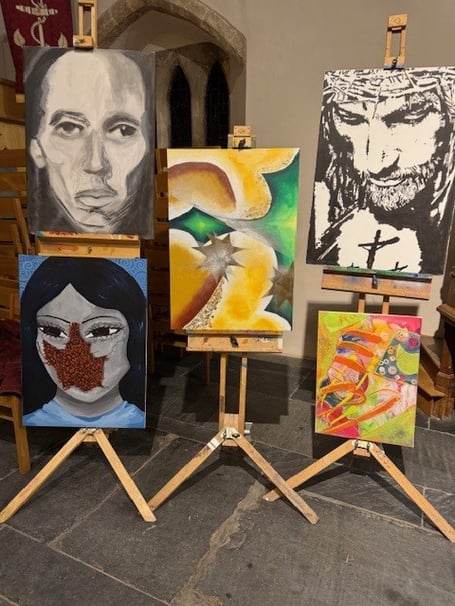Year 10 Art and Design pupils at Dartmouth Academy showcased their creativity at an art exhibition held in support of the concert at St Clement’s Church this term.
The artworks on display were inspired by each pupil’s personal choice of music, allowing them to explore the relationship between sound and visual expression.
This term, Dartmouth pupils have been focusing on visualising text and using colour to convey emotion and narrative. Through their studies, they are learning how artists communicate feeling, atmosphere, and storytelling through abstract forms, mark-making, and deliberate colour choices.
As part of their research, pupils examined the work of renowned artists Anthony Frost and Wassily Kandinsky, both known for using colour and abstraction to convey energy, mood, and emotion.
These examples helped pupils understand how visual art can express ideas and feelings that are difficult to capture through imagery alone.
Pupils also deconstructed the lyrics of songs by Louis Dunford, including The Boy Who Could Fly and Ballad of Benjamin. Ballad of Benjamin, which tells the real-life story of Ben Kinsella, sparked thoughtful and sensitive discussions in class about boys’ mental health, depression, and knife crime.
These conversations have encouraged empathy, reflection, and emotional literacy among pupils.
As part of this exciting project, the school hopes to invite Louis Dunford to visit and speak to pupils about his creative process and the themes within his work.
Nicola Perrott, Assistant Principal at Dartmouth Academy, said:
"This project demonstrates the power of community partnerships and creative learning. By connecting music, art, and important social issues, our pupils not only develop their artistic skills but also build empathy and awareness about challenges faced by young people today."
Matthew Shanks, CEO at Education South West said:
"We are proud to see our students using art to express complex emotions and engage with real-world stories.
“Projects like this encourage reflection, discussion, and emotional growth, showing how education can extend beyond the classroom while encouraging creativity and social responsibility."





Comments
This article has no comments yet. Be the first to leave a comment.